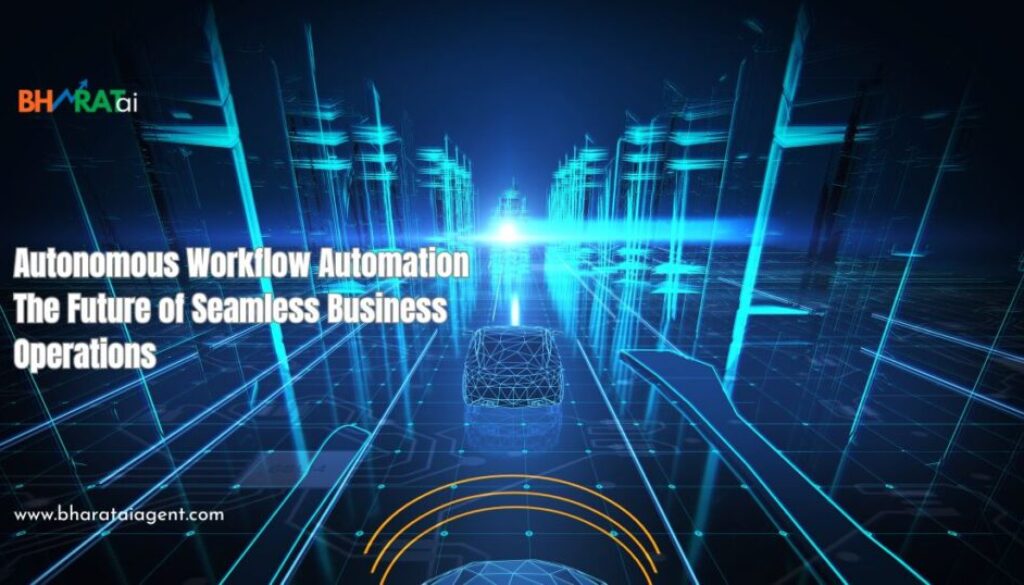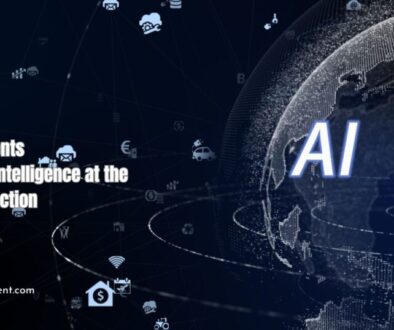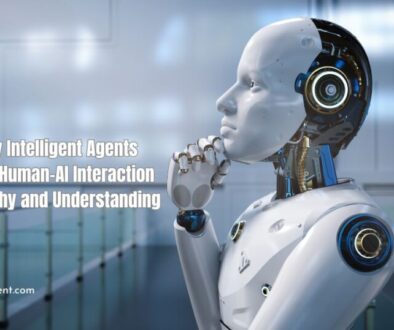Autonomous Workflow Automation in 2025: The Future of Seamless Business Operations
Autonomous Workflow Automation is not just a competitive advantage—it’s a core driver of digital transformation. Unlike traditional rule-based automation, autonomous systems think, decide, and act without human intervention, streamlining operations and adapting in real time to business needs.
You’ll learn:
-
✅ What is Autonomous Workflow Automation?
-
✅ How it differs from traditional automation
-
✅ Key capabilities and technologies in 2025
-
✅ Real-world use cases across industries
-
✅ Benefits and measurable outcomes
-
✅ Challenges, limitations, and ethical considerations
-
✅ Future trends and frequently asked questions (FAQs)
What is Autonomous Workflow Automation?
Autonomous Workflow Automation refers to the use of advanced AI-powered agents and systems that automate end-to-end business processes without constant human input. These systems are capable of:
-
Analyzing inputs and context
-
Making real-time decisions
-
Orchestrating multi-step tasks
-
Learning and optimizing from feedback
Unlike traditional automation (e.g., macros or RPA), autonomous systems can adapt to new situations, handle exceptions, and operate across disconnected systems.
Core Technologies Powering Autonomous Workflow Automation in 2025
-
✅ AI Agents – Intelligent agents with decision-making capabilities using NLP, ML, and knowledge graphs.
-
✅ Machine Learning – Self-improving algorithms that optimize task execution over time.
-
✅ Natural Language Processing (NLP) – Understanding user input, documents, and unstructured data.
-
✅ Generative AI – Creating content, summaries, or messages dynamically to support workflows.
-
✅ Process Mining – Mapping and improving business processes through real-time data analysis.
-
✅ No-Code/Low-Code Platforms – Democratizing automation for non-technical users.
-
✅ APIs & Integrations – Seamless connections across CRMs, ERPs, HRMS, and other enterprise tools.
Key Capabilities of Autonomous Workflow Automation
🔁 End-to-End Orchestration
AI agents manage entire workflows—from task initiation to execution and reporting—across multiple departments and tools.
⚙️ Dynamic Task Allocation
Automatically assigns tasks based on employee availability, skill level, or SLA priority.
🧠 Self-Healing & Adaptability
Detects workflow failures (e.g., broken integrations, data mismatches) and autonomously fixes or reroutes processes.
🗣️ Human-AI Collaboration
Supports natural language input (via chat, email, or voice) and integrates with tools like Slack, Teams, and WhatsApp.
📊 Proactive Insights & Reporting
Generates real-time reports, flags anomalies, and recommends workflow optimizations based on historical and predictive data.
How It Differs from Traditional Automation
| Feature | Traditional Automation | Autonomous Workflow Automation |
|---|---|---|
| Logic | Rule-based, static | Context-aware, adaptive |
| Input Types | Structured only | Structured + unstructured + natural language |
| Decision-Making | Manual or pre-set | Dynamic, real-time AI-driven |
| Learning Capability | None | Self-learning via ML |
| Scope | Task-level automation | End-to-end, cross-functional flows |
Real-World Use Cases (2025)
💼 HR & Onboarding
-
New hire form submissions → ID verification → asset provisioning → payroll registration—all automated.
📦 Supply Chain & Logistics
-
Predictive demand analysis → automated procurement → vendor communication → delivery scheduling.
🧾 Finance & Accounting
-
Invoice scanning → approval routing → payment processing → reconciliation → reporting.
🏥 Healthcare
-
Patient registration → appointment scheduling → insurance verification → record updates.
🛍️ Retail & E-commerce
-
Inventory monitoring → restocking triggers → order fulfillment → customer notifications.
Benefits of Autonomous Workflow Automation
-
🚀 Increased Productivity: Automates manual, repetitive tasks across departments.
-
⏱️ Time Savings: Processes that took hours/days are executed in real-time.
-
💸 Cost Reduction: Minimizes operational overhead and error correction costs.
-
🔄 Consistency & Compliance: Ensures policy adherence and process standardization.
-
📈 Scalable Operations: Easily replicable workflows support business growth without needing more staff.
Challenges & Ethical Considerations
⚠️ Data Privacy & Security
-
Automating sensitive workflows (e.g., HR, finance) requires strict compliance with data protection regulations (e.g., GDPR, DPDP, HIPAA).
🧠 Over-Automation Risks
-
Critical decisions still require human judgment. Autonomous systems should support—not replace—strategic thinking.
🧰 Implementation Complexity
-
Requires upfront investment in integration, mapping, and training.
🔍 Transparency & Explainability
-
Ensuring the “why” behind AI decisions is clear, especially in regulated industries.
Future Trends (Beyond 2025)
-
🤖 Agentic Enterprises: Businesses where autonomous agents manage most internal workflows and decision-making.
-
🧬 AI-Orchestrated Employee Experiences: AI customizing workflows for each employee based on behavior, role, and productivity.
-
🎯 Hyper-Automation at Scale: Combining RPA, AI, analytics, and low-code platforms for organization-wide automation.
-
🧠 Cognitive Automation: Blending AI with business logic to execute complex decisions (e.g., legal contract analysis, fraud detection).
-
🧭 Ethical Governance by Design: Built-in transparency, fairness, and compliance monitoring in every automated flow.
FAQs: Autonomous Workflow Automation
Q1: What exactly is Autonomous Workflow Automation?
It’s an AI-driven approach to automating complex, multi-step business processes without manual intervention—capable of adapting to new inputs and scenarios in real time.
Q2: How is it different from traditional workflow automation or RPA?
While traditional automation follows predefined rules, autonomous automation uses AI to make decisions, handle exceptions, and learn over time.
Q3: Can small businesses use autonomous workflow automation?
Yes. With no-code platforms and SaaS-based AI tools, SMBs can now access enterprise-grade automation affordably.
Q4: What are some tools or platforms supporting this in 2025?
Popular tools include Make.com, n8n, Zapier AI, UiPath AI Center, and Microsoft Power Automate with Copilot.
Q5: Is it safe to fully automate business processes with AI agents?
Yes—when deployed with proper governance, monitoring, and human-in-the-loop controls. Start small, scale responsibly.
Conclusion
Autonomous Workflow Automation is reshaping how businesses operate—delivering speed, accuracy, and intelligence at scale. By empowering AI agents to manage and optimize complex workflows, organizations can unlock true operational agility and position themselves for the future.
#WorkflowAutomation #AIAgents #AutonomousOperations #BusinessAutomation #AI2025 #NoCodeAutomation #SmartWorkflows #ProcessIntelligence #FutureOfWork #EnterpriseAI
Autonomous Workflow Automation 2025
AI workflow agents
No-code AI automation
Intelligent process automation
AI business operations
End-to-end workflow automation
Self-healing AI workflows
GPT-4 automation agents
AI in enterprise operations
Real-time business automation
What is autonomous automation
AI for business process optimization
Adaptive workflow agents
Low-code automation trends
AI in operational efficiency
Human-in-the-loop automation
Workflow bots vs AI agents
Decision-making AI
Scalable AI workflows
Hyperautomation tools




